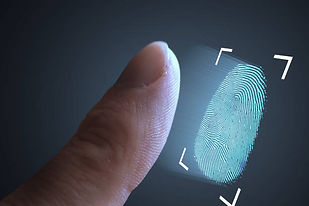
COMPANIES AND CORPORATIONS





In businesses, we can find the same systems as in home access control, as well as more sophisticated ones.
Regarding access control to a room, we can distinguish three entry methods:
Through something you know: a key.
Using something you have: a key or an access card.
Through something you are: This section is specifically focused on biometrics, as it uses methods such as fingerprint sensors, iris sensors, and facial recognition systems.
Access keys
It works based on a password (numeric or alphanumeric) that only a limited number of people have. If you enter a combination other than the correct one, you won't gain access. It presents some problems, as you could forget it or someone else could copy it and gain access.

Identification cards
Access cards are distributed to those who wish to be granted access. These cards are configured so that when they are placed in contact with a (pre-configured) reader, the cardholder's access will be granted. This offers advantages such as the long-lasting durability of the cards, but also disadvantages, as the loss or theft of one could be fatal to the company.


Fingerprint identifiers
It's a device capable of reading, storing, and identifying fingerprints. This makes it the most secure of all, since unlike a password, which you can forget and have copied, or a card, which you can lose, this option doesn't present these drawbacks.
Facial recognition
It combines facial recognition and infrared with a unique deep learning algorithm to achieve exceptional authentication accuracy. Applied to access control, we can have it record a series of faces so that access is denied to anyone not listed in its records.
It also offers features adapted to these times of pandemic, such as denying access if a person is not wearing a mask or taking a person's temperature.
Iris recognition
It works similarly to facial recognition, but focused on the iris. It can scan this part of the eye and create a record of known irises. Applied to access control, we can have it record a series of irises so that access is denied to anyone not listed in its records.






